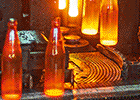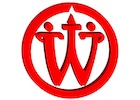As the benchmark packaging material, glass is also the most protective for beverages and food. 100% recyclable ad infinitum with no loss of quality, it is at the heart of the circular economy thanks to the use of recycled glass, or cullet, in the production process, which is the main raw material for glassmakers.
Against this backdrop, the Verallia Group, Europe’s leading and the world’s third-largest producer of glass packaging for food and beverages, has made cullet a key element of its strategy.
INVESTING TO MAKE THE CIRCULAR ECONOMY A REALITY: THE CHALLENGES FACING GLASS RECYCLING TO MOVE TOWARDS ZERO WASTE
“Our cullet strategy is twofold. Firstly, to significantly increase the recycling rate, by developing collection networks – primarily in markets with fewer resources – and by raising consumer awareness of the circularity of glass. Secondly, by optimizing the performance of processing centers, notably by improving materials sorting technologies” explains Romain Barral, Director of Operations, Verallia Group.
Today, external cullet is the main raw material used by glassmakers. Its incorporation rate in bottle and jar production has risen considerably in recent years, reaching up to 95% in some of the Group’s furnaces. At present, however, its availability limits its integration. To improve this availability, we need to optimize the collection, sorting and processing of glass waste.
To this end, Verallia is committed to awareness-raising programs. For example, the Group is a member of the European action platform “Close the Glass Loop”, a collaborative public-private partnership created by the European Glass Packaging Federation (FEVE), which aims to increase the glass collection rate to 90% by 2030.
At the same time, Verallia is investing in the development of recycling in places where infrastructures are still inadequate, such as South America. Among these initiatives, the Group has launched a program to install collection bins in Brazil (900 bins by the end of 2023), where the collection rate was 25% in 2021.
INVESTING TO ENSURE CULLET AVAILABILITY
The growing demand from the Group’s customers for ever more eco-friendly packaging is an excellent lever for developing glass circularity and meeting their own sustainability challenges.
In this context, it is important for Verallia to establish closer links between industry players and regions, in order to standardize collection processes and thus, in the long term, increase the quantity and quality of cullet.
Verallia currently operates 19 cullet processing centers in 8 countries, including 16 in Western Europe and 3 each in Chile, Argentina and Russia. Thanks to these facilities, Verallia is able to process almost 50% of the cullet it needs to feed its furnaces.
INVESTING IN CULLET INTEGRATION: A STRATEGY TO REDUCE THE GROUP’S CARBON FOOTPRINT
In the face of the climate emergency, Verallia is committed to decarbonizing its activities and aims to reduce its emissions by 46% by 2030 compared with 2019. For example, the Group is innovating on the energy front by deploying new melting technologies for the food glass sector, such as 100% electric or hybrid (80% electric) furnaces).
Cullet also plays a major role in this decarbonation process. Replacing raw materials with recycled glass offers numerous advantages. Adding 10 points of cullet to the production process reduces a glass furnace’s CO2 emissions by 5% and its energy consumption by 2.5%. What’s more, recycling one tonne of cullet saves an average of 1.2 tonnes of virgin raw materials.
Manufacturing a material that can be recycled over and over again, the glass industry is a model of the circular economy. The Group is capitalizing on this circularity and is making every effort to respond to the pressures on its availability and quality.
“By being present across the entire glass recycling value chain, Verallia gives concrete expression to its purpose, i.e. to re-imagine glass for a sustainable future,” adds Romain Barral.

























